Photographs: Shaun Botterill/Getty Images
Michael Clarke’s team, says Bikash Mohapatra, may have lost the Ashes 0-3, but did enough to ensure England will have a lot to worry about in three months' time.
Australia’s failure to win a single Test in the just-concluded Ashes series has thrown up an interesting statistic.
The team from Down Under hasn’t won an international fixture since January, the format notwithstanding.
Never before in history had an Australian team endured such a dry run. Add to it the fact that this is the first Australian team in 60 years to surrender the urn on three straight occasions, and it becomes worse, certainly a bitter pill to swallow for a side that not long ago was the most dominant in world cricket.
Having said that, statistics are a ruthless barometer of performance.
They proffer a reality check no doubt, but one that’s solely based on the numbers registered. There’s no regard whatsoever to the effort put in.
And it is on this count that the Australians will leave English shores with both satisfaction and hope, satisfaction because their performance was a comeuppance compared to the shabby showing in the series against India earlier in the year – one that ended in a 0-4 humiliation – and hope because they can now look forward to the return series, starting November, with eager anticipation.
Batting problems exposed
Image: Shane WatsonPhotographs: Shaun Botterill/Getty Images
Given little chance ahead of the series, with few experts even predicting a first ever clean sweep for England, Australia rose to the occasion, despite an apparent lack of resources.
That the Australian batting is in shambles, post the back-to-back retirements of Ricky Ponting and Mike Hussey, had been exposed in the subcontinent. The over-dependence on their captain, and lack of consistency of the new lot meant they were no match for a rampaging Indian side.
It seemed an encore was on the cards in England, at least in the first two Tests. While Shane Watson’s problem with his front foot lay exposed – the batsman being dismissed leg before on more occasions than not -- the likes of Phil Hughes, Usman Khawaja and, for that matter, even David Warner were disappointing to say the least.
Rogers, Smith willing to take up more responsibility
Image: Steve Smith of Australia celebrates his century watched by Brad Haddin during Day Two of the fifth Ashes Test at The OvalPhotographs: Shaun Botterill/Getty Images
Their captain was good but self-admittedly needed to be more consistent. Both at TrentBridge and Lord’s, the visitors had to rely on their tail-enders to put up a semblance of a fight.
However, as the series progressed, Watson, at least, had better numbers to show. And in Chris Rogers and Steven Smith, there emerged two batsmen who were willing to take up the responsibility.
The fact remains that the visitors, despite the problems with their batting, posted the top two totals in the series – 527 for 7 declared (at Manchester) and 492 for 9 declared (at The Oval).
A lot remains to be done ahead of the home series, but at least the Australians are finally putting effort in that direction.
Harris survived the excessive workload
Image: Ryan HarrisThere were never any problems as such when it came to the performance of the Australian bowlers. In fact, bowling has been the team’s saving grace in recent times.
The worrying factor albeit pertained to the fact that their bowlers were injury prone. James Pattinson, after being impressive in the first two Tests, was forced to leave for home early. Jackson Bird didn’t even last a full Test.
And the Australian think-tank remained concerned throughout about Ryan Harris, one of their consistent bowlers, as well the most injury-prone. However, to his credit Harris not only survived the excessive workload but also emerged as their highest wicket-taker (24 scalps).
The diligent Peter Siddle (17 wickets) and the talented but erratic Mitchell Starc (10 wickets) were impressive in their supporting roles.
In the final analysis, if injury worries can be taken care of, Australia has a good lot of fast bowlers that it can rely on in the years to come.
The visitors were in contention in each of the other four Tests, save Lord's
Image: The Australian players celebrate a wicketPhotographs: Ryan Pierse/Getty Images
As regards England, suffice to say they benefitted considerably from the Australian failings. Save the Lord’s Test, that the hosts dominated, the visitors were in contention in each of the other four matches.
Besides, the form of their batsmen will be a cause for concern for the English think-tank. Not once in the series did the home team score over 400 runs in an innings.
Captain Alastair Cook and Jonathan Trott, the two stars of the show in the triumph Down Under in 2010-11, were notable underperformers on this occasion. The usually dependable Matt Prior was a disappointment. As regards Jonny Bairstow, the less said the better.
It was the consistency of Ian Bell, a few good efforts from Kevin Pietersen and Joe Root, coupled with regular contributions from the bowlers (James Anderson and the ilk), that helped England retain the urn.
England have a lot to worry in the return Ashes series
Image: The England cricket teamPhotographs: Ryan Pierse/Getty Images
It is imperative here to mention that Cook’s team, on quite a few occasions, was forced to resort to negative tactics to contain the aggressive Aussies.
In the final analysis, even the staunchest of England fans, and the harshest of Australia’s critics, will admit that the latter exceeded all expectations as far as their performance is concerned.
The brave declaration at The Oval -- where one day was washed out -- that almost cost them the match reiterated the fact that Aussie spirit is still in tact.
Michael Clarke’s team might have returned empty-handed from this series but they have done enough to ensure England will have a lot to worry about in three months time.

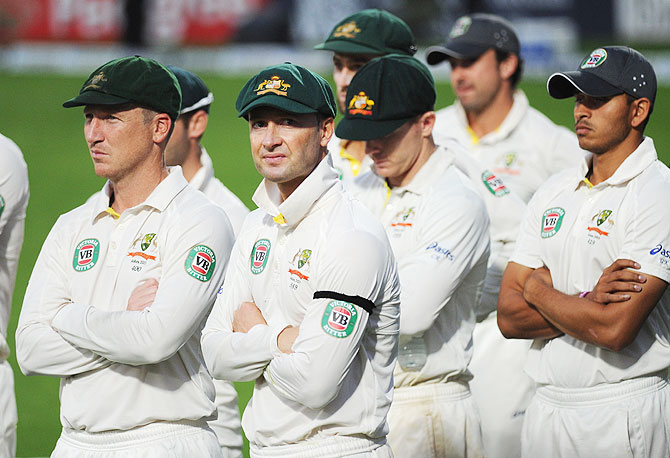
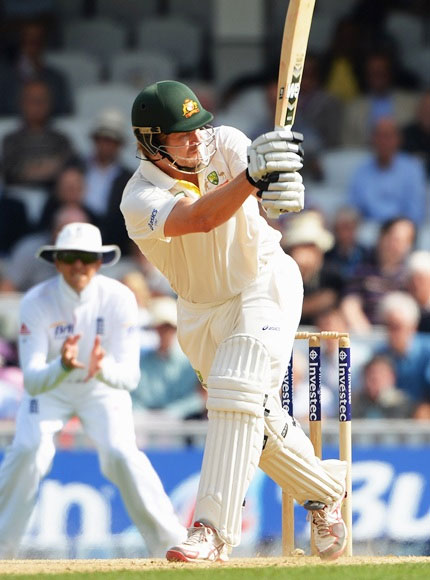
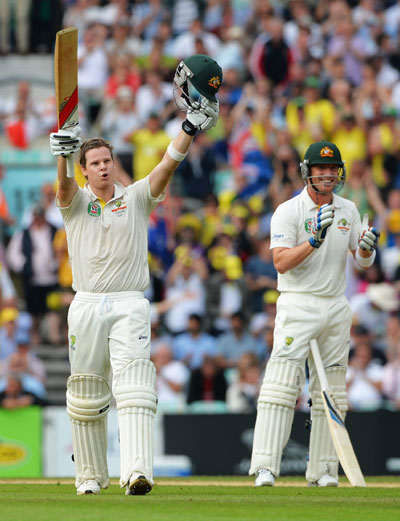

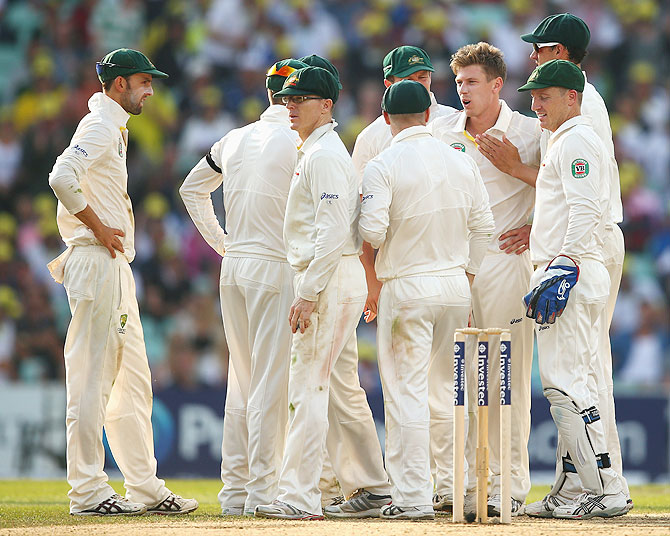
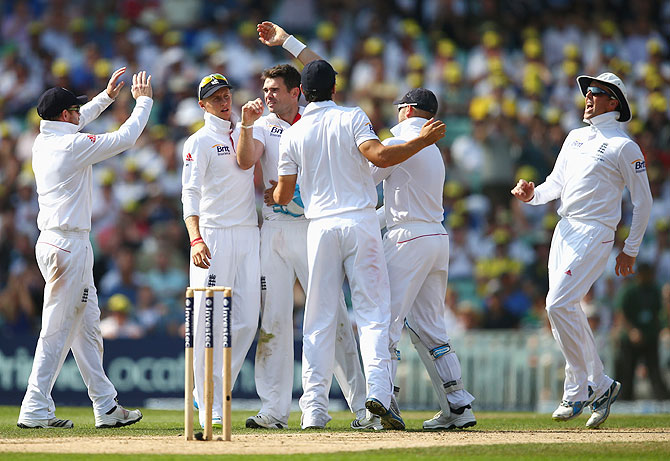
Comment
article